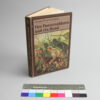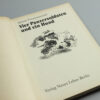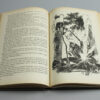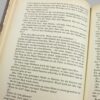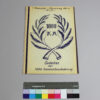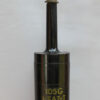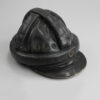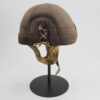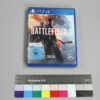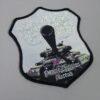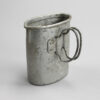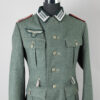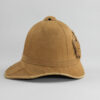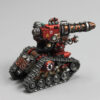Book “Four tank soldiers and a dog” ca. 1970
Inventory number: DPM 6.2163
In 1964, Janusz Przymanowski published the novel “Four Tankers and a Dog” (Czterej pancerni i pies) about the experiences of a T-34 tank crew during the Second World War. In it, the protagonist Jan Kos, aged just 15, smuggles himself into the 1st Polish Infantry Division “Tadeusz Kościuszko”, which was formed in 1943, and tries to find his missing father. Together with his dog “Scharik”, he becomes a crew member of a T-34 named “Rudy” (literally: redhead; in German translation: red fox), named after a red-haired female medic in the story. At the beginning, the crew consists of a Soviet commander, the Polish protagonist, an Upper Silesian and a Georgian. They start as part of an armored brigade in Sielce on the Oka River and take part in numerous battles until the liberation of Warsaw in January 1945. The narrative follows this story, but the focus is on the relationship between the crew and their adventures, which they overcome with wit and cunning.
The story was filmed as a television series and first aired on Polish television on May 9, 1966. It was originally only supposed to contain eight episodes, but was so popular that Przymanowski wrote two more books, which extended the series to a total of 21 episodes in three seasons and ended with the Battle of Berlin. The series quickly achieved cult status and was frequently repeated on Polish television. In 1968, around 37% of Polish households had a television and the government was now taking television seriously as a medium for ideological content. However, overt party and system propaganda was very unpopular with Polish viewers. There was also fundamental criticism of the amount and type of war films and series broadcast and a longing for light, non-violent entertainment.
The books and the series “Four Tank Soldiers and a Dog” were so popular because they omitted many of the darker sides of the war or balanced them out with humorous scenes. This is particularly true of the series, which, for example, omits the tank crew’s visit to the liberated Majdanek concentration camp, which was described in the book. The story offered Polish society an interpretation of the Second World War that focused on the patriotic liberation struggle of Poland against Germany – on the side of the Soviet Union.
This is condensed in the book in a general’s speech before the advance across the Vistula: “Remember, there is no way back. Where we are is the border of our fatherland.” The missions and the handling of the tank are greatly simplified. Regardless of the damage, “Rudy” is always recovered and repaired quickly. For example, it receives a new engine within a few hours and when the cannon is damaged, the mechanic quickly cuts it a little shorter with a handsaw. Needless to say, the crew continue to hit their targets.
However, some readers and viewers also recognized subtle references to the problematic Soviet-Polish history, for example in the biography of the protagonist Jan Kos, who was in Siberia at the beginning of the story – where many Poles were deported during the Soviet annexation of eastern Poland in 1939. The focus is on a light heroic story, but serious themes are also addressed. For example, the underage protagonist recognizes himself in a young Wehrmacht soldier he had killed, to which his Soviet commander replies: “It wasn’t us who started this war and not you. It was you. […] We will remember that they are human beings when the war is finally over and we have taken away their weapons. We mustn’t think about it now” […]. “The fears of the tank soldiers are also at least hinted at, for example by removing flammable material from the tank as far as possible before deployment – except for the dog’s blanket.
Przymanowski’s books were also published in German in the series “Spannend erzählt” by the publishing house Neues Leben, which published literature for young people in the GDR. This volume is an abridged version of the first two volumes; the story ends before the Oder is crossed. The book is illustrated by Karl Fischer, one of the GDR’s best-known illustrators of books for young people. The series was also popular beyond Poland in many states of the USSR and the approximately one-hour episodes were also broadcast weekly in the GDR from 1968.
Object of the month
(short) stories from the depot
Unfortunately, many objects cannot currently be shown in the exhibition for conservation reasons. Here you will find unusual objects and exciting stories of special pieces from the depot


